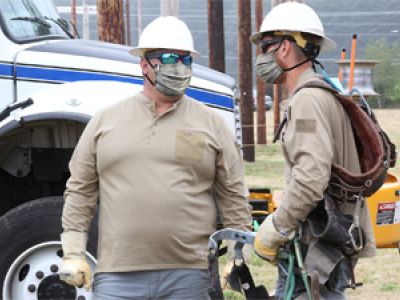
Building an ATV/UTV Training Program for Utilities and Contractors
Utility task vehicles (UTVs) and all-terrain vehicles (ATVs) are quickly becoming the preferred motorized equipment for lineworkers to use to access difficult terrain for necessary inspection and repair of infrastructure. And although they are exceptionally capable, these vehicles – identifiable by their large off-road tires, relatively small size and light weight – pose certain challenges […]

Lagging Indicators, Leading Indicators … Let’s Start Over
What do indicators really mean? Occupational safety and health (OSH) professionals continue to debate this issue. Can indicators really measure performance of an OSH program? On one side are lagging indicators, which include common markers such as total recordable incident rate (TRIR); days away, restricted and transfer rate; and experience modification rate.

FR/AR Clothing Considerations During the COVID-19 Pandemic
In 29 CFR 1910.132, OSHA clearly states that personal protective equipment and appropriate training are required for individuals working in utilities, electrical petroleum, oil and gas exploration, and other industries where there is a danger of being injured by arc flash or flash fire.
Writing an ATV/UTV Operating Safety Policy
This installment of “Train the Trainer 101” is a little bit different than usual in that we are going to write an operating safety policy. There are two goals here: to help you learn to develop policies that make a difference, and to prevent wrecked all-terrain vehicles (ATVs) and utility task vehicles (UTVs) on your […]
Overhead Line Work, Then and Now
Overhead line work requires much planning beforehand and total attention when it is being performed. Recently I’ve had several requests to discuss this kind of work, so I’m going to take you back to the days when I was a lineman and, later, a crew supervisor to aid in this discussion of overhead jobs. When […]
June-July 2021 Q&A
Q: We have received some pushback from clients when setting up transmission pulling on EPZ mats that are constructed over crane mats, covered with galvanized cattle panels, overlapped, stapled down and bonded together. We follow a model passed down through our parent company’s safety research committee. Our clients have asked if the installation is certified. […]
The Safety Paradox: My Day at the Safety Conference
Here’s a hypothetical and exaggerated scenario about a day I spent attending a safety conference (the iP Utility Safety Conference & Expo, of course!). It begins with me watching a safety glove demonstration. I watch a person put on a glove, crush a wine glass, stab themselves in the hand with a needle and run […]

